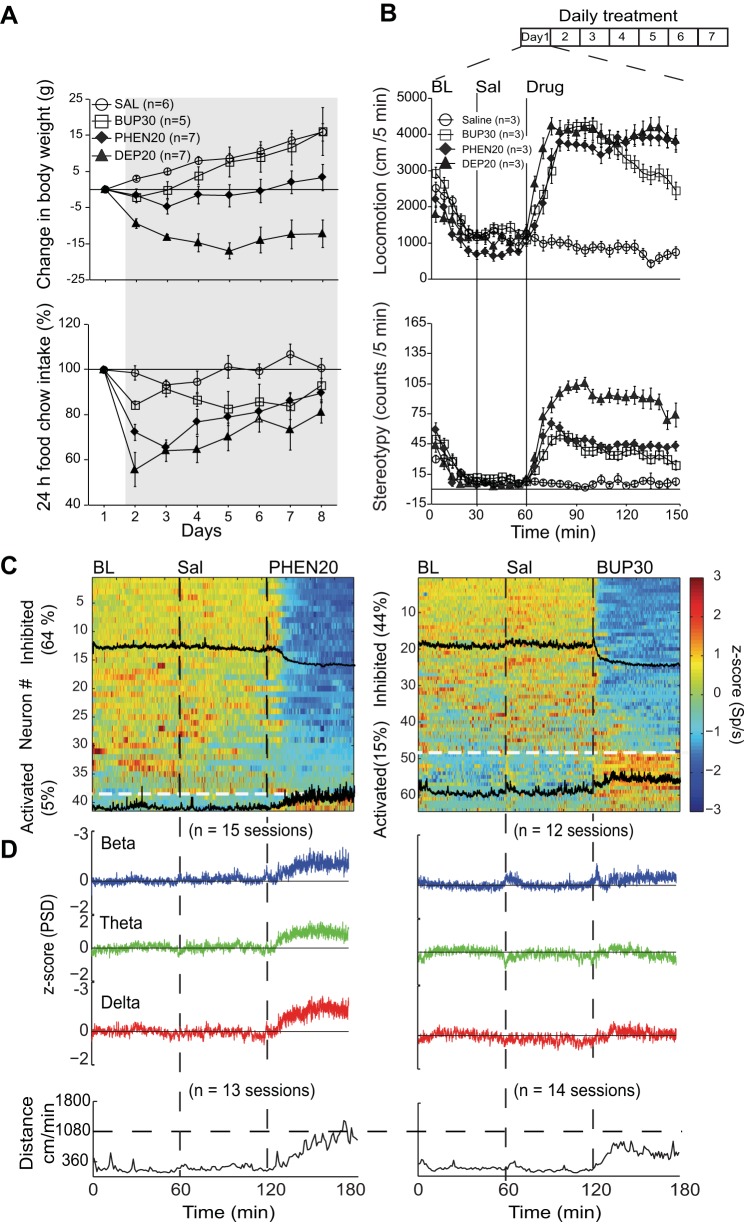Fig. 7.
Appetite suppressants phentermine (PHEN) and bupropion (BUP) also modulate appetite, locomotion, and NAc shell activity. A, top: graph showing the change in weight over a 7-day intragastric treatment (gray shading) with saline, PHEN20, BUP30, and DEP20. Relative to saline, the 3 treatments produced a significant weight loss with DEP20 exhibiting the greatest loss. The weight loss with BUP30 was significant for only 2 days. In contrast to DEP20, during treatment, PHEN20- and BUP30-treated animals began to recover their weight. Bottom: for the same animals, the change in 24-h food intake was unmodified with saline infusions but transiently decreased with PHEN20 and DEP20. BUP30 gradually and slightly decreased food intake during treatment. B, top: effect on locomotion of repeated infusions of PHEN20, BUP30, and DEP20 measured in an open-field arena. All groups displayed a gradual decrease in exploratory activity within 20 min from introduction into the open field (BL). Intragastric infusions were then made at 30-min intervals with saline, and at 60 min with the corresponding appetite suppressant. Bottom: quantification of head weavings (stereotypy) caused by these 3 appetite suppressants. Relative to saline, DEP20 induced the largest effect and PHEN20 and BUP30 the smallest. C: color-coded PSTH showing the number of NAc shell neurons that were inhibited or activated by PHEN20 (left) and BUP30 (right). Each neuron was normalized to z-score values (see materials and methods). The black tracings are the mean PSTH of the inhibited and activated responses. The horizontal line separates these populations. D, top: normalized PSDs of mean LFPs at beta, theta, and delta frequencies during BL, Sal, and PHEN20 (left) and BUP30 epochs (right). Both compounds increased the LFP oscillations for the 3 frequency bands. Bottom: PHEN20 and BUP30 both increased locomotion, albeit with a delay.

